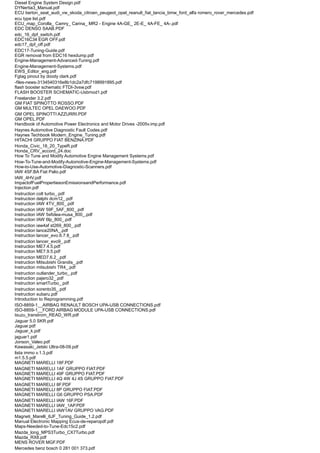
- Edit bin file ecu car hacking software#
- Edit bin file ecu car hacking code#
- Edit bin file ecu car hacking free#
sure if you’re doing flash emulation they’re good upto a point.
Edit bin file ecu car hacking software#
better off saving the money and using a cheaper jtag (even pe micro) and spending the money on more tools or software dev. Same for lauterbach, i have their trace32/+ BDM/jtag debuggers and simulators, they’re gathering dust since the software is subpar. i see people spend a fortune on whats often a can transceiver + mcu. There’s nothing really special about them, as long as it can sniff can, handling timing and stuff they’re all pretty much the same, unless you rely on their software. The hardware should be available for preorder shortly, either directly on our site or as part of a crowdfunding campaign. if anyone has questions our company can help with. There’s a lot of great potential here, and who knows - if we get enough user interest, we might be able to sway an OEM or two to the dark side. We hope you join us in doing the same, so that we can all access the information transmitted within the vehicles we own and operate. While it’s rather sparse now, we have more data that we’ve collected internally and hope to publish soon. On our company website (I don’t want to linkspam, so Google us), we have a link to a Wiki we’ve created in the hopes of building a user community for sharing reverse engineered CAN parameters. This is a subject very near and dear to our hearts here at We create CAN/GSM bridges (we call them “CARduinos”), but even with access to CAN - you really need an understanding of what exactly is on the network to accomplish anything. Posted in Featured, Network Hacks, News Tagged automotive, CAN, CAN Hacking Post navigation Next time, we’ll look at how these protocols work, and what fun can be had with them. However, for diagnostic applications, there are special protocols that are used. The majority of the communications during normal operation work by decoding a database. No, this car wasn’t actually doing 8000 RPM. For example, you could send a fake engine RPM to the instrument cluster.

You can also pretend to be controllers by sending spoofed data onto the bus. One example is a hack we featured that sniffed the bus for steering wheel button presses. With a database file in hand, you can easily sniff the CAN bus and interpret all kinds of data.
Edit bin file ecu car hacking code#
The databases are used to auto-generate code that can interpret the messages.
Edit bin file ecu car hacking free#
The DBC editing tool, CANDB++, is free (as in beer). The most popular format is DBC, which is a proprietary (but ASCII based) format by Vector. This database contains definitions of all messages and signals. To help program controllers that agree on messages and signals, a CAN database is used.

A table of CAN signals that make up a message A sample CAN message layout Below is the table of signals, and the graphical layout of a sample message. Instead all controllers must agree on the layout of messages and signals beforehand. No signal information is transmitted over the bus. Each signal has a start bit and end bit, which are used to select the correct bits out of the 8 bytes. To make sense of the 8 data bytes, the controller will decode the data into signal such as engine RPM, fuel level, or brake pedal position. The meaning of the information is inferred from the message ID, and the length is specified by the DLC. In some applications, a DLC of 8 is always used, and unused data bytes are padded with zeros.įinally, the 8 bytes of data contain the actual information. The data length code (DLC) is 4 bits, and specifies how many bytes of data will be in the message. The ID also defines the priority: the lower the ID, the higher the message’s priority. Typically standard IDs are 11 bits, but there are also 29 bit extended type IDs. The identifier (ID) is used to specify what the message means, and who’s sending it. An oversimplified in-vehicle networkįrom a software perspective CAN message consists of 3 parts: an identifier, a data length code, and up to eight bytes of data. All messages are broadcast to every controller on the bus. Many controllers can connect to the same bus in a multi-master configuration. Differential is used in more critical applications, such as engine control, and single wire is used for less important things, such as HVAC and window control.

Single wire runs on a single wire, and at lower speeds, but is cheaper to implement. Differential uses two wires and can operate up to 1 Mbps. On the hardware side, there’s two types of CAN: differential (or high-speed) and single wire. Now we’ll look into the protocol and how it’s used in the automotive industry. Last time, we discussed how in-vehicle networks work over CAN.


 0 kommentar(er)
0 kommentar(er)
